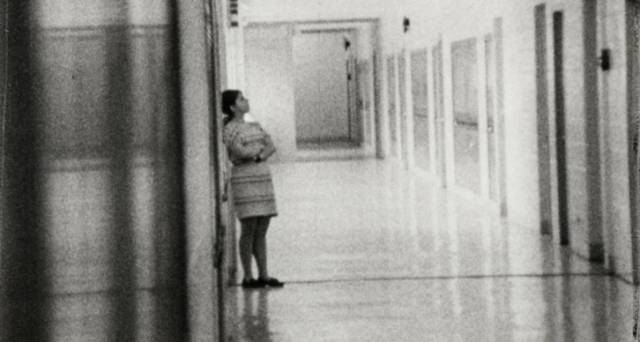
 Documentaries are sometimes dismissed as events that can be “saved for home”, but there is a larger than life quality in all of Frederick Wiseman’s films that makes them perhaps as perfect a cinematic experience as can be. Even though his works have been shown mostly on public television, and have become a staple on certain educational institutions, they feel almost like quasi-religious experiences on the big screen; giant mirrors reflecting the potential of life back to us. His astonishing High School, from 1968 (playing at Metrograph from March 25-31) acquires a life of its own when watched in the dark surrounded by strangers.
Documentaries are sometimes dismissed as events that can be “saved for home”, but there is a larger than life quality in all of Frederick Wiseman’s films that makes them perhaps as perfect a cinematic experience as can be. Even though his works have been shown mostly on public television, and have become a staple on certain educational institutions, they feel almost like quasi-religious experiences on the big screen; giant mirrors reflecting the potential of life back to us. His astonishing High School, from 1968 (playing at Metrograph from March 25-31) acquires a life of its own when watched in the dark surrounded by strangers.
At first, it seems to take on the form of one of its most peculiar vignettes, in which a group of adolescent students are shown an animated short that explains to them what happens to a woman’s reproductive system when it becomes infected with a venereal disease. Informative, often slightly morbid, and quite frank in its depiction of life’s many horrors, High School makes one cringe in the dark, as if in showing us what he saw in Northeast High School in Philadelphia - where the film was shot - Wiseman was also looking straight through us.
As any of his films, High School, is also a perfect little snapshot of its era, watching the film in a post-Mad Men world makes it feel like the ideal companion for Matthew Weiner’s ode to pragmatism; for once, Wiseman can be accused of warmth. If the film looks at the youths with a critical eye - boys are at their worst when in the company of a male gynecologist who during an educational talk brags about getting paid to touch vaginas - it’s impossible to wonder how many of the boys in question lost siblings, cousins or eventually their own lives in Vietnam.
Throughout the film, we’re also reminded of the harsher division that existed between the genders, while the boys receive their sexual education in a large auditorium, the girls are shown as being groomed to have the perfect bodies that will make them attractive wives. We see them in gym class doing an-even-then too erotic dance routine, and then taking fashion design classes where they get to model the gowns they designed. The well-meaning teacher points out a girl’s “weight problem” to the rest, praising the bigger girl for trying to conceal her flaws in a column design. Behind the teacher’s wide spectacles it’s impossible to see anything other than a woman who was raised a certain way, and fears that the salvation of these young girls is up to her.
Even though Wiseman obviously didn’t shoot the film in a single day, he creates an illusion of continuity as we get to spend the entire day in the school. It’s thanks to his sly editing and insightful juxtaposition, that we get to see the unjust system which highlights strict discipline and home economics over actual personal and intellectual growth. But never one to criticize without offering hope, Wiseman shows us glimmers of beauty in two specific instances, in one of them we see a teacher asking her class to repeat the word “existentialism” in Spanish. As she recites Sartre to her students, we don’t only see a woman who was ahead of her time in highlight the importance of Cervantes’ language in America, but also someone who saw past the hormones and attitude of these young people and saw an angst she identified herself with. We also get to see a teacher using Paul Simon lyrics to teach English, another reminder that such cinematic poetry was not meant to be consumed alone, watching it in a movie theater ought to feel positively enlightening.